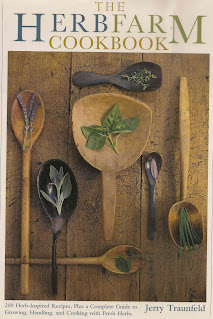 |
Plated Umbels of Lovage seed (Levisticum officinale) Shaw Island, Photo this day 15 August '15. |
Common Name: Lovage; "Love Parsley"; "Mountain Celery", in Italy.
Life Cycle: Hardy, Herbaceous Perennial.
Native: Most say the Mediterranean, but others dispute that.
Height: 8'-10' at maturity in 3 years.
Bloom: Tall umbels of white/yellow flowers, in the 2nd year.
Tolerates: Deer.
Site: Full sun or partial shade.
Sowing: September to October or February to June.
Cultivation:
Cultivation since the time of Pliny (23-79AD), has ilong grown in Europe.
 |
Lovage art by Louise M. Smith© One of 16 watercolors in The Herb Farm Cookbook. |
 |
Reference for this post: The HerbFarm Cook Book Traunfeld, Jerry. Scribner, N.Y. 2000. |
This will tower over your herb garden with its architectural beauty. One plant is enough but try to replant with a new plant every few years. Give it good soil, some water, and deadhead the flower stalks if you don't wish new seedlings around the base of the plant. Traunfeld writes that this plant will tolerate more shade than most herbs; in hot climates, it dislikes baking in the sun.
Uses:
Good for use in S. European cuisine, where leaves are used as an herb, roots as a vegetable, and seeds as a spice. For the essence of celery without the trial of growing that vegetable, this is for you. Lovage has a distinct flavor and is greatly appreciated by food aficionados.
It is considered a prize on the list of good companion plants that improve the health of all garden vegetables. Tender growth has the best flavor, so in summer, around June, consider pruning back to encourage new leaves. Will die down in winter but will re-emerge in spring.
Lovage has been used in alcoholic cordials for centuries––mixed with tansy and yarrow then mixed with brandy. The original cordials were used on long voyages. The first cordial containing lovage was recorded in 14 C; it is used in some liqueurs with Borage, as one of the Pimms mixes in production today.
Medieval travelers tucked the leaves into their shoes because of the antiseptic and deodorizing properties. Lovage flowers are adored by honey bees and Swallowtail butterflies. That is enough reason to grow this herb.



No comments:
Post a Comment